Instructions for transplanting cherries to another place in the summer for beginner gardeners
Transplanting cherries to another location in summer is just as possible as in spring or autumn. In order for the plant to tolerate the procedure well, it is replanted at a certain time and according to all the rules.
For this purpose, suitable varieties and location on the site are selected. How to replant a tree so that it takes root, subsequently grows well and bears fruit, we will consider in this article.
Why replant cherries in summer?
In summer, cherries are already in the process of sap flow, so the plant is replanted only if necessary. It must be remembered that summer replanting can affect the quality of the crop.
In what cases and why is this necessary?
The plant is replanted in the summer months for several reasons:
- trees grow very close to each other;
- the soil is not suitable for cherries;
- there is little light at the landing site;
- groundwater lies close;
- moving to another site and the desire to preserve a certain variety.
All these factors slow down the growth and development of the tree and affect the yield.
Summer transplant dates
When you can replant a plant in the summer depends on what stage of the growing season it is at.
Transplantation is allowed before flowering and after fruiting is completed. In the first ten days of June, cherries bloom mainly in Siberia and the Urals, so in these regions the tree can be replanted in the summer before flowering.
In other areas, the crop blooms in late April and May.
After fruiting, the cherries are replanted - at the end of July and in August in any region.
Important! Replanting cherries is not allowed during the period of flowering, formation and ripening of fruits.
Favorable days according to the lunar calendar
The lunar calendar advises replanting fruit trees on certain days. Such days in 2020 are August 1 and 2, 11 and 12, and August 22-30.
The calendar also provides for unfavorable numbers. In August 2020 it is the 3rd and 19th.
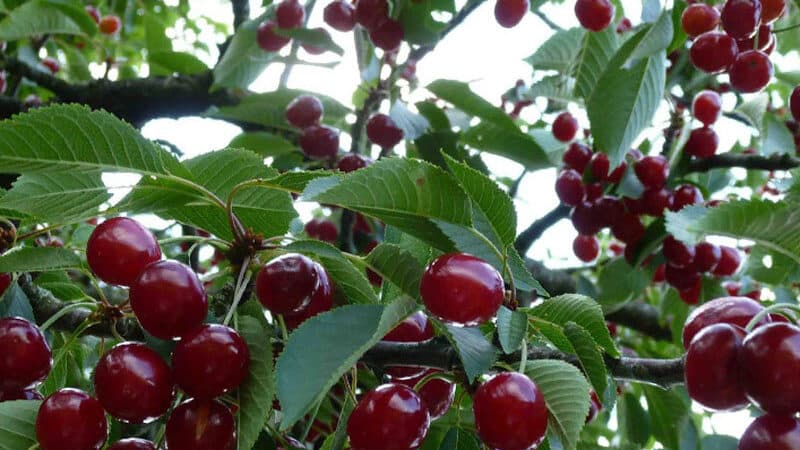
Choosing a new place
In order for the cherry to like the new place, follow a number of recommendations:
- The plant loves light, so choose a well-lit area, for example, the southern part of the garden.
- Since the cherry tree grows strongly, choose a place without other plants and buildings nearby.
- Culture does not like drafts. A fence or building located on the north side will protect it from cold winds.
- Highly acidic soil is not suitable for wood. The optimal type of soil for cherries is loamy or sandy loam.
- If the site is located in a low-lying or damp area, a good drainage system will be needed to grow cherries. Otherwise, the roots of the tree will rot.
Favorable and unfavorable neighborhood
Not all crops can be planted nearby. Some plants release substances into the air that negatively affect the development and productivity of their neighbors.
What can be planted next to cherries:
These plants will not negatively affect cherries, and many pests, including cherry aphids and ants, cannot stand the smell of elderberries.
Important! Apricot, peach and plum trees planted next to cherry trees should be short (no more than 3 m), otherwise they will create shadow.
What should not be planted next to cherries:
- Solanaceae (tomatoes, eggplant, pepper);
- honeysuckle;
- currants;
- gooseberry;
- raspberries
Pome crops, such as apple and pear, will not cause harm to cherry trees, but can shade them with their spreading crown.
Preparing cherries for transplantation
After choosing a planting site, prepare the site and planting hole.
Preparing the site and planting hole
If the soil on the site has neutral acidity, the tree is replanted without preliminary procedures. When the soil is acidic, dolomite flour, chalk or slaked lime are used. The product is scattered over the area and shallowly embedded in the soil. It is recommended to prepare the soil in the autumn-spring period.
The planting hole is prepared in advance (1-2 months in advance) so that the earth settles. The pit should have a depth of 0.5 m and a width of 0.7 m. Drainage (small stones or broken bricks) is placed at the bottom.
Fertilizers are also applied:
- compost or humus;
- ash;
- superphosphate;
- potassium salt.
How to properly replant a cherry tree
Cherries are replanted in compliance with certain rules. Otherwise, the plant will develop poorly or will not take root in the new location.
Required materials and tools
To replant the plant you will need a shovel. It is used to dig up the roots along with the soil clod. If the tree is mature and the lump is large, use an iron drag sheet on which the tree is moved to a new location.
To trim the crown, use a hedge trimmer or secateurs. If the plant is transported by car, its branches are tied, and the trunk and crown are wrapped in matting or other dense fabric.
Step-by-step instruction
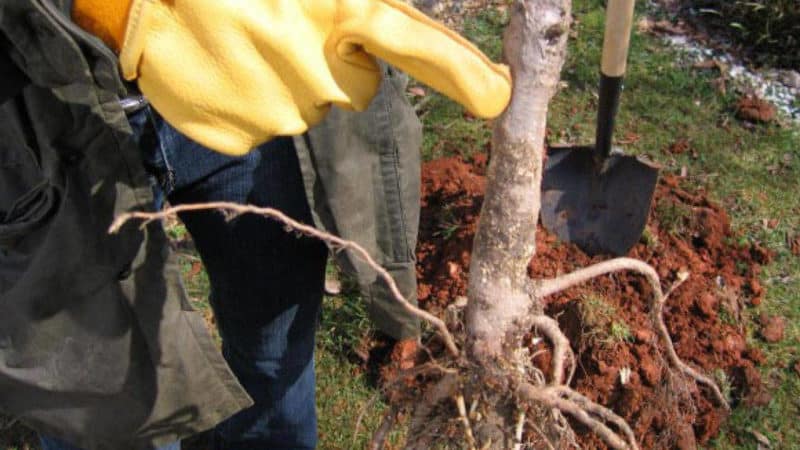
When the place is chosen and prepared, transplantation begins. It is carried out by exposing the roots of the tree or leaving an earthen lump. Experienced gardeners prefer the second option, because the plant will adapt faster.
Rules for replanting cherries:
- To prevent soil from falling off the roots when digging up a tree, the soil around it is pre-moistened. It is enough to pour 4-5 buckets of water under the cherry.
- The plant is dug up around the perimeter of the crown, leaving a lump of earth on the roots.
- The excavated tree is inspected; if there is damage to the roots, they are removed.
- If the roots are dry, they are soaked in water for 2-3 hours.
- The roots, together with a lump of earth, are wrapped in cloth or cellophane, this protects them from damage.
- A small amount of earth is poured into the prepared hole.
- The plant is placed in the center of the hole so that the root collar is located at a level of 3 cm above the sprinkled soil.
- The hole is filled with soil.
- A recess for watering is left within a radius of 25 cm from the tree.
- After transplanting, the cherries are watered abundantly, using about 20 liters of water.
- The ground is mulched to retain moisture and protect the roots from frost in winter.
When replanting mature trees, it is recommended to trim the crown to reduce pressure on the roots. The skeletal branches are shortened by 1/3 or 2-3 large branches are removed. The cut areas are covered with garden varnish.
Reference. If you want to get an abundant and high-quality harvest, plant no more than 5 trees in one area at a distance of 2.5 m from each other.
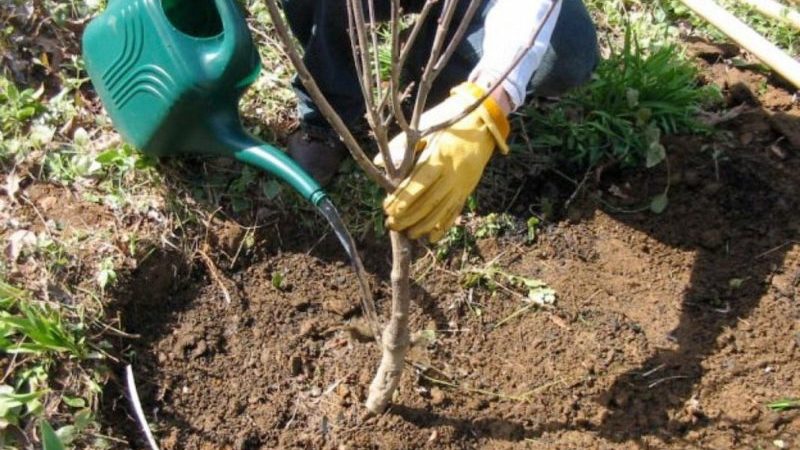
Mistakes to Avoid
Cherry replanting is not a labor-intensive process, but it is carried out taking into account all the rules and nuances. If the plant is replanted according to all the rules, the harvest will be good.
Mistakes during transplantation can cost the gardener his harvest; in the worst case, the tree will not take root and will die.
What not to do when transplanting cherries in summer:
- replant on a rainy and windy day;
- choose unsuitable soil;
- replant during flowering and fruiting;
- damage the root system when digging;
- replant in the shade or damp place.
The nuances of transplantation for different varieties
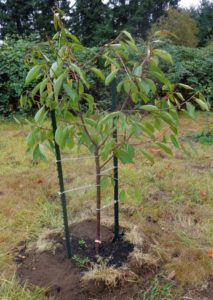
There are many varieties of cherries, and by type the crop is divided into ordinary, bush (steppe) and felt.
Ordinary cherry is the most resistant to transplants and tolerates them well.
Steppe cherry tolerates the procedure worse and may die after transplantation. This species is moved only in case of emergency using standard technology in compliance with all rules.
Felt cherry does not tolerate the procedure due to its weak root system. Young trees can be replanted with caution and only in the spring, after the snow has melted.
For plants of different ages
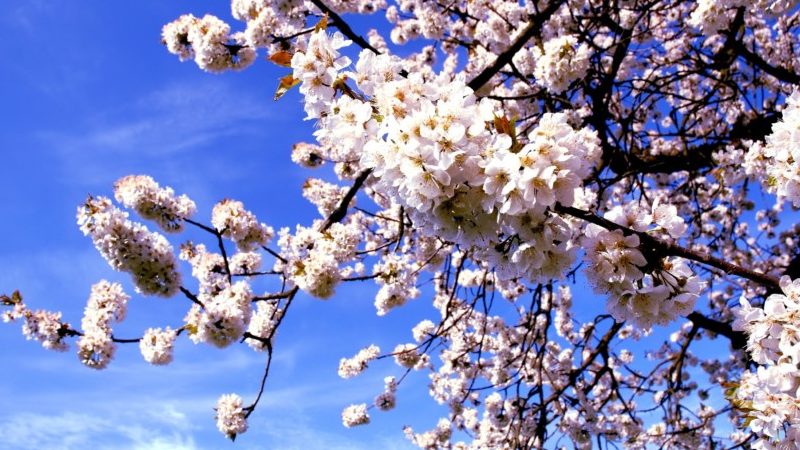
It is recommended to remove young cherries from the mother tree, as they take away nutrients and slow down the fruiting of an adult plant.
Young cherries take root better than adults: the younger the tree, the more chances it has to take root.
Dig out the plant carefully so as not to damage the delicate young root system. Seedlings with weak roots usually do not take root, so they need to be carefully inspected. The tree trunk should also be healthy, and the leaves should be even and without damage. Autumn replanting is suitable for young cherries.
Mature trees are replanted before they are 5 years old. Recovery processes occur differently at different stages of development. The most optimal age for transplantation is 2 years.
Mature trees rarely take root in a new location. If it is necessary to move an adult tree to another place, the main attention is paid to digging, during which it is very important to preserve all root cuttings. Replant an adult plant with a lump of earth, avoiding exposing the roots.
Further care
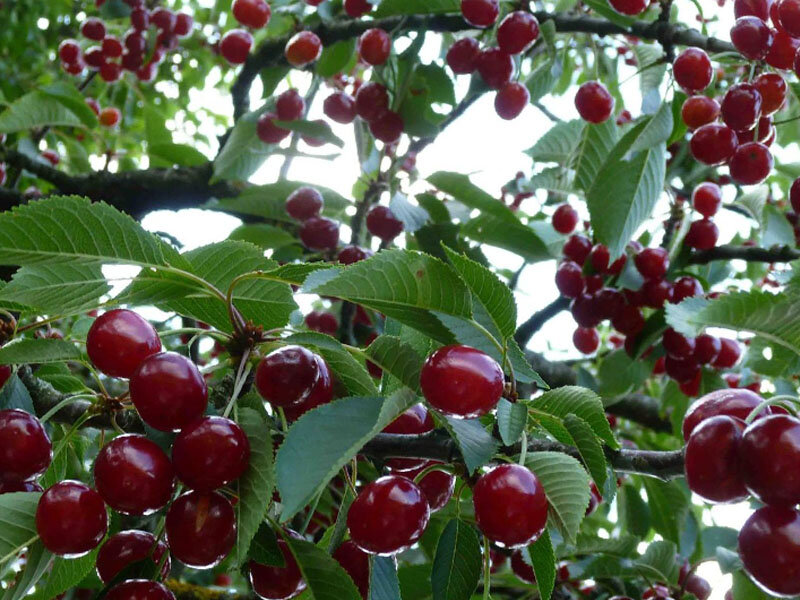
After transplantation, the cherry tree continues to be cared for.The plant is watered once every 3 days for 1-2 months. In rainy summers, additional moistening is not carried out.
Any oversaturation of fertilizers is dangerous for a transplanted plant. Phosphorus and potassium fertilizers are added in small quantities, as well as compost, humus or ash.
In the spring, insect pests become more active, so you need to prepare for their attack in advance. In the fall, when the transplanted plant has already taken root, the area is dug up and the plant debris is destroyed.
Advice from experienced gardeners

It is difficult for novice gardeners to take into account all the nuances of replanting fruit trees, so professionals are happy to share their experience:
- The transplanted plant will always be weaker, so it is protected from frost. For this purpose, in the spring, before the snow has yet melted, the roots of the plant are sprinkled with it, and the top is covered with 15 cm of soil. Also, before frosts, fires are lit to fumigate the trees with smoke.
- When replanting, the roots are not allowed to dry out.
- The root system must be protected from rodents. To do this, the planting hole is lined with spruce branches.
- If there is no soil on the roots, they are placed in a clay mash.
- While the tree is taking root, it is constantly moistened and loosened.
- Before transplanting, remove dry and damaged branches from the cherry tree.
Conclusion
The process of transplanting cherries to a new location is simple. If you have started such a procedure, you should take into account the type of crop, the time and rules of transplantation, and competently organize the new place and further care.
Attention is paid to the condition of the root system. If you ensured the safety of the roots during transplantation, the crop will take root firmly in the new place and will develop and bear fruit in the first year after the procedure.